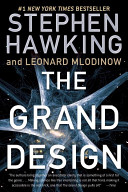The Brain Creates Models of the World
We make models in science, but we also make them in everyday life. Model-dependent realism applies not only to scientific models but also to the conscious and subconscious mental models we all create in order to interpret and understand the everyday world. There is no way to remove the observer—us—from our perception of the world, which is created through our sensory processing and through the way we think and reason. Our perception—and hence the observations upon which our theories are based—is is not direct, but rather is shaped by a kind of lens, the interpretive structure of our human brains.
Model-dependent realism corresponds to the way we perceive objects. In vision, one's brain receives a series of signals down the optic nerve. Those signals do not constitute the sort of image you would accept on your television. There is a blind spot where the optic nerve attaches to the retina, and the only part of your field of vision with good resolution is a narrow area of about i degree of visual angle around the retina's center, an area the width of your thumb when held at arm's length. And so the raw data sent to the brain are like a badly pixilated picture with a hole in it. Fortunately, the human brain processes that data, combining the input from both eyes, filling in gaps on the assumption that the visual properties of neighboring locations are similar and interpolating. Moreover, it reads a two-dimensional array of data from the retina and creates from it the impression of three-dimensional space. The brain, in other words, builds a mental picture or model.
The brain is so good at model building that if people are fitted with glasses that turn the images in their eyes upside down, their brains, after a time, change the model so that they again see things the right way up. If the glasses are then removed, they see the world upside down for a while, then again adapt. This shows that what one means when one says "I see a chair" is merely that one has used the light scattered by the chair to build a mental image or model of the chair. If the model is upside down, with luck one's brain will correct it before one tries to sit on the chair.
Notes:
Using the eye as an example, Hawking describes how our brains model the outside world and builds theories about it.
Folksonomies: empiricism perception theory senses
Taxonomies:
/science (0.582482)
/art and entertainment/visual art and design/design (0.541228)
/art and entertainment/movies and tv/television (0.498501)
Keywords:
Model-dependent realism (0.988980 (positive:0.520291)), optic nerve (0.986542 (negative:-0.636972)), Model-dependent realism corresponds (0.930466 (positive:0.520291)), subconscious mental models (0.929811 (negative:-0.238171)), optic nerve attaches (0.929354 (negative:-0.640007)), badly pixilated picture (0.924914 (negative:-0.902189)), brain (0.750283 (negative:-0.339552)), everyday life (0.716258 (positive:0.253275)), human brains (0.715452 (positive:0.444391)), world (0.704717 (positive:0.118249)), sensory processing (0.698068 (positive:0.249139)), interpretive structure (0.696031 (positive:0.444391)), scientific models (0.687344 (neutral:0.000000)), everyday world (0.683648 (negative:-0.238171)), blind spot (0.672602 (negative:-0.640007)), two-dimensional array (0.672005 (negative:-0.571606)), visual angle (0.669082 (neutral:0.000000)), three-dimensional space (0.668285 (negative:-0.571606)), good resolution (0.668053 (neutral:0.000000)), narrow area (0.664278 (neutral:0.000000)), raw data (0.662204 (negative:-0.902189)), visual properties (0.659752 (neutral:0.000000)), human brain (0.658236 (positive:0.317602)), model building (0.655794 (positive:0.520129)), right way (0.648562 (positive:0.480134)), mental image (0.643597 (neutral:0.000000)), mental picture (0.642040 (negative:-0.501885)), chair (0.611145 (positive:0.342326)), retina (0.600740 (negative:-0.605807)), signals (0.520531 (negative:-0.633937))
Entities:
raw data:FieldTerminology (0.735667 (negative:-0.385398)), Hawking:Person (0.578213 (neutral:0.000000))
Concepts:
Brain (0.968374): dbpedia | freebase | opencyc
Eye (0.802342): dbpedia | freebase | opencyc
Human brain (0.760175): dbpedia | freebase
Retina (0.681051): dbpedia | freebase | opencyc
Nervous system (0.656311): dbpedia | freebase | opencyc
Visual perception (0.616925): dbpedia | freebase | opencyc
Neuroanatomy (0.608896): dbpedia | freebase
Neuron (0.606816): dbpedia | freebase | opencyc





